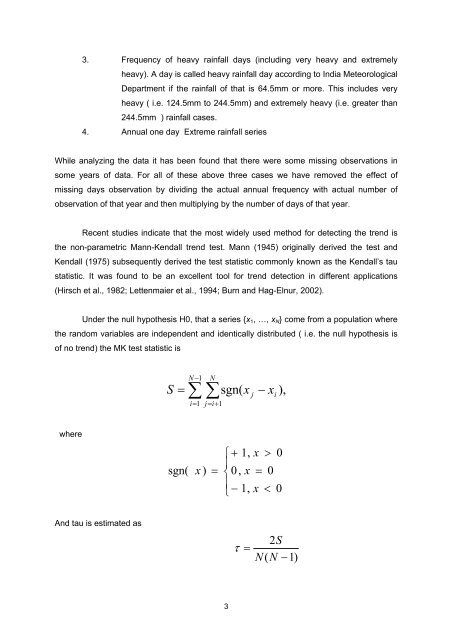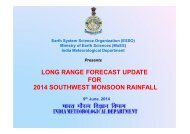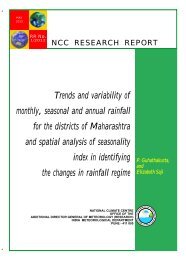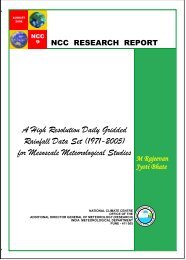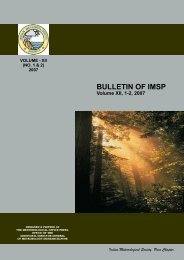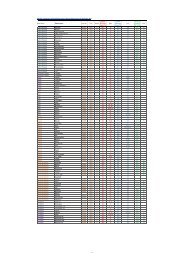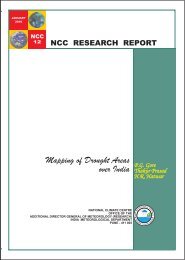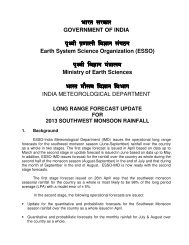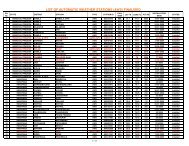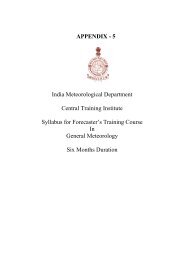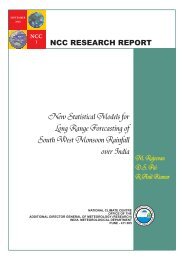Changes in extreme rainfall events and flood risk in ... - (IMD), Pune
Changes in extreme rainfall events and flood risk in ... - (IMD), Pune
Changes in extreme rainfall events and flood risk in ... - (IMD), Pune
You also want an ePaper? Increase the reach of your titles
YUMPU automatically turns print PDFs into web optimized ePapers that Google loves.
3. Frequency of heavy ra<strong>in</strong>fall days (<strong>in</strong>clud<strong>in</strong>g very heavy <strong>and</strong> <strong>extreme</strong>lyheavy). A day is called heavy ra<strong>in</strong>fall day accord<strong>in</strong>g to India MeteorologicalDepartment if the ra<strong>in</strong>fall of that is 64.5mm or more. This <strong>in</strong>cludes veryheavy ( i.e. 124.5mm to 244.5mm) <strong>and</strong> <strong>extreme</strong>ly heavy (i.e. greater than244.5mm ) ra<strong>in</strong>fall cases.4. Annual one day Extreme ra<strong>in</strong>fall seriesWhile analyz<strong>in</strong>g the data it has been found that there were some miss<strong>in</strong>g observations <strong>in</strong>some years of data. For all of these above three cases we have removed the effect ofmiss<strong>in</strong>g days observation by divid<strong>in</strong>g the actual annual frequency with actual number ofobservation of that year <strong>and</strong> then multiply<strong>in</strong>g by the number of days of that year.Recent studies <strong>in</strong>dicate that the most widely used method for detect<strong>in</strong>g the trend isthe non-parametric Mann-Kendall trend test. Mann (1945) orig<strong>in</strong>ally derived the test <strong>and</strong>Kendall (1975) subsequently derived the test statistic commonly known as the Kendall’s taustatistic. It was found to be an excellent tool for trend detection <strong>in</strong> different applications(Hirsch et al., 1982; Lettenmaier et al., 1994; Burn <strong>and</strong> Hag-Elnur, 2002).Under the null hypothesis H0, that a series {x 1 , …, x N } come from a population wherethe r<strong>and</strong>om variables are <strong>in</strong>dependent <strong>and</strong> identically distributed ( i.e. the null hypothesis isof no trend) the MK test statistic isSN − 1 Ni= 1 j=i+1= ∑∑sgn( x j− xi),wheresgn(x )=⎧ + 1,⎪⎨0,x⎪⎩ − 1,x> 0= 0x < 0And tau is estimated asτ =2SN(N −1)3


